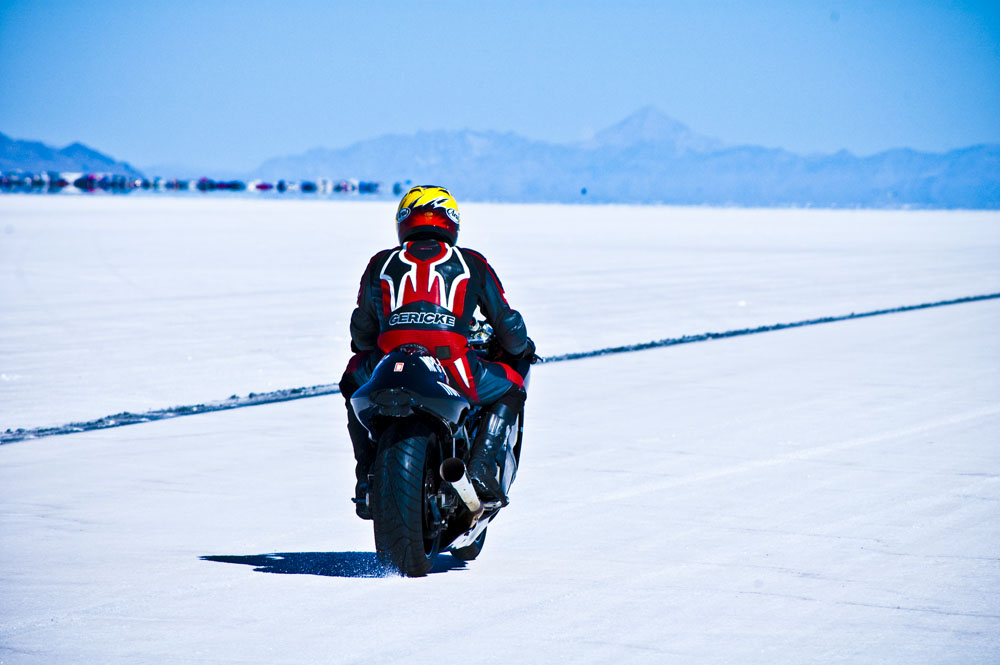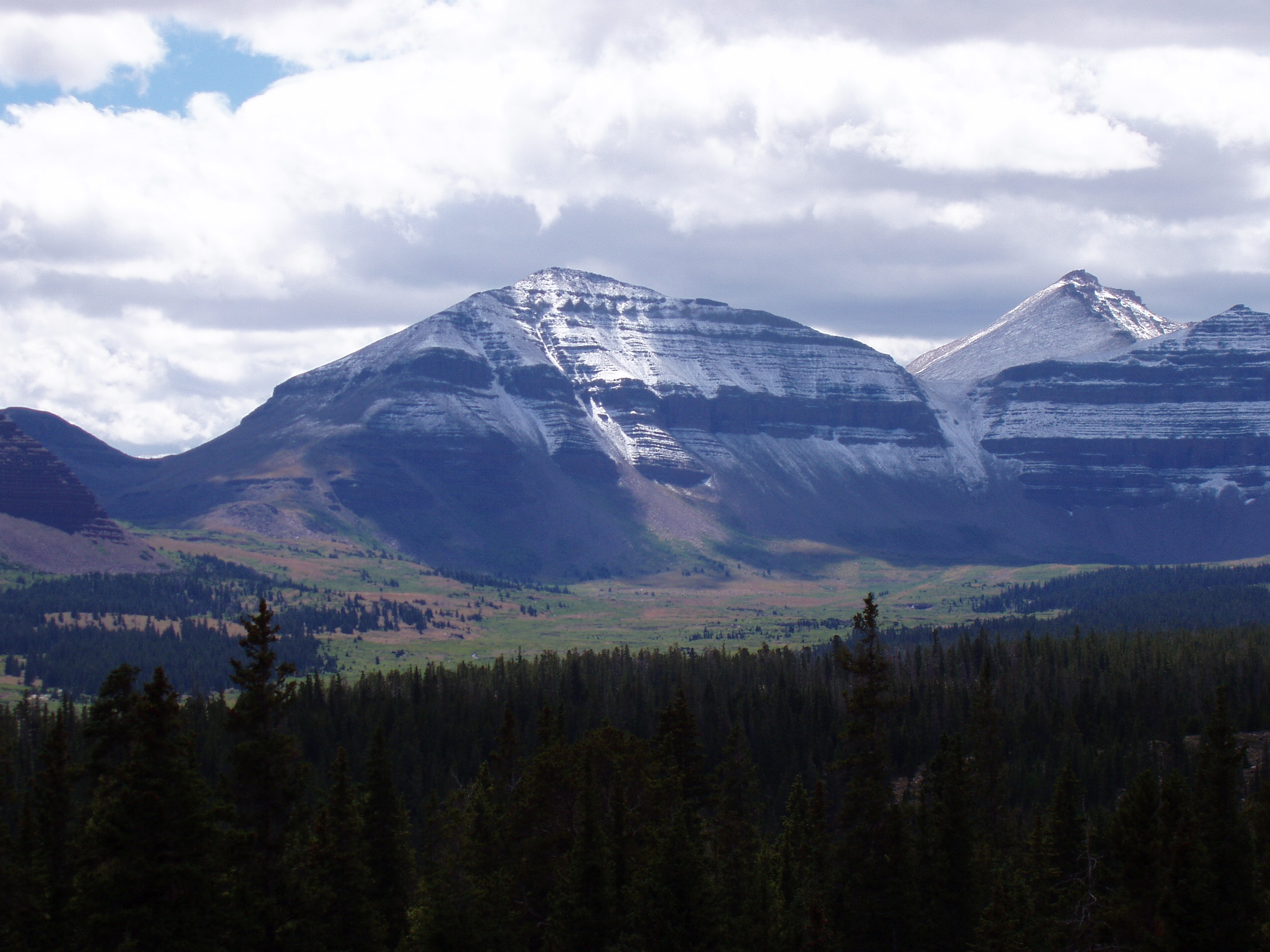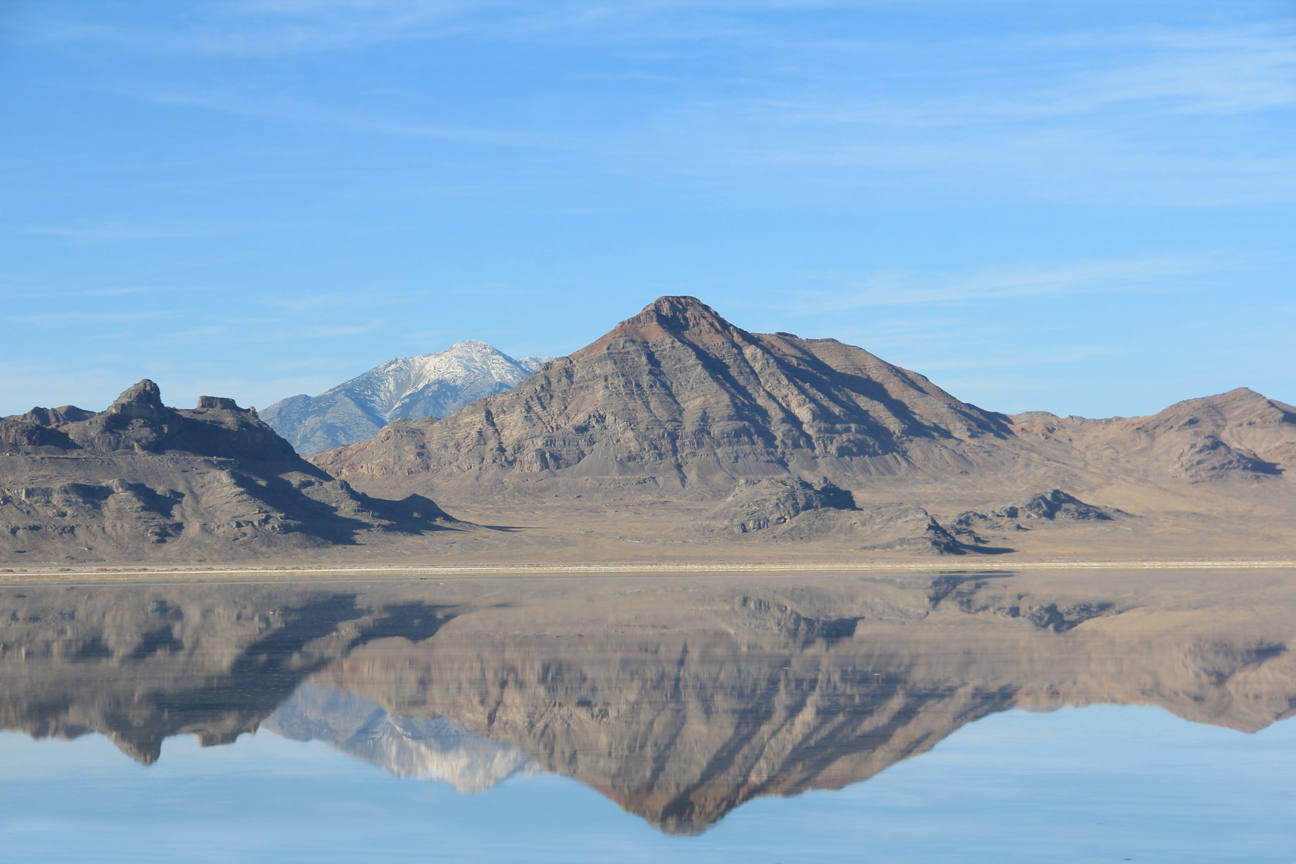|
Graham Peak (Utah)
Graham Peak is a mountain summit located in Tooele County, Utah, United States. Description Graham Peak is the highest summit in the Silver Island Mountains which are a subset of the Great Basin Ranges.John W. Van Cott (1990), ''Utah Place Names'', University of Utah Press, , p. 160 It is set on land controlled by the Bureau of Land Management. The community of Wendover, Utah, is 21 miles to the southwest and the Bonneville Speedway is ten miles to the south. Topographic relief is significant as the summit rises over above the Bonneville Salt Flats in three miles, as well as the same above the Pilot Valley Playa. This landform's toponym was officially adopted in 1960 by the U.S. Board on Geographic Names to honor Athol Graham (1924–1960), who was the first Utahan and second American to drive over 300 MPH on land.United States Board on Geographic Names (1960), ''Decisions on Names in the United States, Puerto Rico and the Virgin Islands, Decision List 6001'', Depart ... [...More Info...] [...Related Items...] OR: [Wikipedia] [Google] [Baidu] |
Great Salt Lake Desert
The Great Salt Lake Desert (colloquially referred to as the West Desert) is a large dry lake in northern Utah, United States, between the Great Salt Lake and the Nevada border. It is a subregion of the larger Great Basin Desert, and noted for white evaporite Lake Bonneville salt deposits including the Bonneville Salt Flats. Description Several small mountain ranges occupy the edges of the desert, such as the Cedar Mountains, Lakeside Mountains, Silver Island Mountains, Hogup Mountains, Grassy Mountains, and Newfoundland Mountains. On the western edge of the desert, just across the border in Nevada, stands Pilot Peak in the Pilot Range. The desert is cool during the winter and includes unusual plants adapted to the dry conditions. Most of the desert receives less than of annual precipitation. The salt crust covering the desert reforms yearly when the rain evaporates. The military's Utah Test and Training Range is in the northern portion of the desert. The lowest part of ... [...More Info...] [...Related Items...] OR: [Wikipedia] [Google] [Baidu] |
Bonneville Speedway
Bonneville Speedway (also known as the Bonneville Salt Flats Race Track) is an area of the Bonneville Salt Flats northeast of Wendover, Utah, that is marked out for motor sports. It is particularly noted as the venue for numerous land speed records. The Bonneville Salt Flats Race Track is listed on the National Register of Historic Places. The salt flats were first used for motor sports in 1912, but did not become truly popular until the 1930s when Ab Jenkins and Sir Malcolm Campbell competed to set land speed records. A reduction of available racing surface and salt thickness has led to the cancellation of events at Bonneville, such as Speed Week in 2014 and 2015. Available racing surface is much reduced with just available instead of the courses traditionally used for Speed Week. Track layouts Historically, the speedway was marked out by the Utah Department of Transportation at the start of each summer. Originally, two tracks were prepared; a long straightaway for speed tr ... [...More Info...] [...Related Items...] OR: [Wikipedia] [Google] [Baidu] |
Mountains Of Tooele County, Utah
A mountain is an elevated portion of the Earth's crust, generally with steep sides that show significant exposed bedrock. Although definitions vary, a mountain may differ from a plateau in having a limited summit area, and is usually higher than a hill, typically rising at least 300 metres (1,000 feet) above the surrounding land. A few mountains are isolated summits, but most occur in mountain ranges. Mountains are formed through tectonic forces, erosion, or volcanism, which act on time scales of up to tens of millions of years. Once mountain building ceases, mountains are slowly leveled through the action of weathering, through slumping and other forms of mass wasting, as well as through erosion by rivers and glaciers. High elevations on mountains produce colder climates than at sea level at similar latitude. These colder climates strongly affect the ecosystems of mountains: different elevations have different plants and animals. Because of the less hospitable terrain and ... [...More Info...] [...Related Items...] OR: [Wikipedia] [Google] [Baidu] |
Mountains Of Utah
A mountain is an elevated portion of the Earth's crust, generally with steep sides that show significant exposed bedrock. Although definitions vary, a mountain may differ from a plateau in having a limited summit area, and is usually higher than a hill, typically rising at least 300 metres (1,000 feet) above the surrounding land. A few mountains are isolated summits, but most occur in mountain ranges. Mountains are formed through tectonic forces, erosion, or volcanism, which act on time scales of up to tens of millions of years. Once mountain building ceases, mountains are slowly leveled through the action of weathering, through slumping and other forms of mass wasting, as well as through erosion by rivers and glaciers. High elevations on mountains produce colder climates than at sea level at similar latitude. These colder climates strongly affect the ecosystems of mountains: different elevations have different plants and animals. Because of the less hospitable terrain and ... [...More Info...] [...Related Items...] OR: [Wikipedia] [Google] [Baidu] |
Bonneville Salt Flats, Silver Island Mountains
Bonneville may refer to: People * Benjamin Louis Eulalie de Bonneville (1796–1878), French-born officer in the United States Army, fur trapper, and explorer in the American West * Gerard Bonneville, fictional character in ''Book of Dust'' * Hugh Bonneville (born 1963, English actor * Nicholas Bonneville (born 1760), French writer Places in Belgium * Bonneville, Namur, former municipality in the province Namur, now part of Andenne Places in France * Bonneville, Charente, in the Charente ''département'' * Bonneville, Haute-Savoie, in the Haute Savoie ''département'' * La Bonneville, in the Manche ''département'' * Bonneville, Somme, in the Somme ''département'' * Bonneville-Aptot, in the Eure ''département'' * Bonneville-et-Saint-Avit-de-Fumadières, in the Dordogne ''département'' * La Bonneville-sur-Iton, in the Eure ''département'' * Bonneville-la-Louvet, in the Calvados ''département'' * Bonneville-sur-Touques, in the Calvados ''département'' Places in the United ... [...More Info...] [...Related Items...] OR: [Wikipedia] [Google] [Baidu] |
List Of Mountain Peaks Of Utah
This article comprises three sortable tables of major mountain peaksThis article defines a significant summit as a summit with at least of topographic prominence, and a major summit as a summit with at least of topographic prominence. All summits in this article have at least 500 meters of topographic prominence. An ultra-prominent summit is a summit with at least of topographic prominence. of the U.S. State of Utah. The summit of a mountain or hill may be measured in three principal ways: #The topographic elevation of a summit measures the height of the summit above a geodetic sea level.All elevations in this article include an elevation adjustment from the National Geodetic Vertical Datum of 1929 (NGVD 29) to the North American Vertical Datum of 1988 (NAVD 88). For further information, please see this United States National Geodetic Surveybr>noteIf the elevation or prominence of a summit is calculated as a range of values, the arithmetic mean is shown. The firs ... [...More Info...] [...Related Items...] OR: [Wikipedia] [Google] [Baidu] |
Diurnal Temperature Variation
In meteorology, diurnal temperature variation is the variation between a high air temperature and a low temperature that occurs during the same day. Temperature lag Temperature lag is an important factor in diurnal temperature variation: peak daily temperature generally occurs ''after'' noon, as air keeps net absorbing heat even after noon, and similarly minimum daily temperature generally occurs substantially after midnight, indeed occurring during early morning in the hour around dawn, since heat is lost all night long. The analogous annual phenomenon is seasonal lag. As solar energy strikes the Earth's surface each morning, a shallow layer of air directly above the ground is heated by conduction. Heat exchange between this shallow layer of warm air and the cooler air above is very inefficient. On a warm summer's day, for example, air temperatures may vary by from just above the ground to waist height. Incoming solar radiation exceeds outgoing heat energy for many hours afte ... [...More Info...] [...Related Items...] OR: [Wikipedia] [Google] [Baidu] |
Desert Climate
The desert climate or arid climate (in the Köppen climate classification ''BWh'' and ''BWk''), is a dry climate sub-type in which there is a severe excess of evaporation over precipitation. The typically bald, rocky, or sandy surfaces in desert climates are dry and hold little moisture, quickly evaporating the already little rainfall they receive. Covering 14.2% of earth's land area, hot deserts are the second most common type of climate on earth after the polar climate. There are two variations of a desert climate according to the Köppen climate classification: a hot desert climate (''BWh''), and a cold desert climate (''BWk''). To delineate "hot desert climates" from "cold desert climates", there are three widely used isotherms: most commonly a mean annual temperature of , or sometimes the coldest month's mean temperature of , so that a location with a ''BW'' type climate with the appropriate temperature above whichever isotherm is being used is classified as "hot arid sub ... [...More Info...] [...Related Items...] OR: [Wikipedia] [Google] [Baidu] |
Land Speed Record
The land speed record (or absolute land speed record) is the highest speed achieved by a person using a vehicle on land. There is no single body for validation and regulation; in practice the Category C ("Special Vehicles") flying start regulations are used, officiated by regional or national organizations under the auspices of the Fédération Internationale de l'Automobile (FIA). The land speed record (LSR) is standardized as the speed over a course of fixed length, averaged over two runs (commonly called "passes"). Two runs are required in opposite directions within one hour, and a new record mark must exceed the previous one by at least one percent to be validated. History The first regulator was the ''Automobile Club de France'', which proclaimed itself arbiter of the record in about 1902. Until 1903, trains held the land speed record for fastest vehicles in which people could travel. Different clubs had different standards and did not always recognize the same wor ... [...More Info...] [...Related Items...] OR: [Wikipedia] [Google] [Baidu] |
Pilot Valley Playa (Nevada And Utah)
The Pilot Valley Playa is a playa and salt pan in Box Elder County, Utah and Elko County, Nevada that is a remnant of Pleistocene Lake Bonneville. Located in northwestern Utah and northeastern Nevada, the Pilot Valley Playa varies from five to ten miles wide, and is thirty miles long, with an elevation just above 4200 feet. It is bordered by the Pilot Mountains to the west, and the Silver Island Mountains to the southeast. Springs are located in the alluvial fans at the base of the Pilot Range, and no water flows from the Silver Island Mountains. Shallow groundwater (e.g., Bettridge Creek, with threatened Lahotan cutthroat trout) along the western edge of the playa varies from fresh water to brine over a distance of about 2,000 feet. Pilot-Thousand Springs Watershed The Pilot Valley Playa gets very little precipitation, experiences extreme temperatures and high wind speeds. The playa is within the ''Pilot-Thousand Springs Watershed'' (USGS Huc 16020307), a endorheic ... [...More Info...] [...Related Items...] OR: [Wikipedia] [Google] [Baidu] |
Bonneville Salt Flats
The Bonneville Salt Flats are a densely packed salt pan in Tooele County in northwestern Utah. A remnant of the Pleistocene Lake Bonneville, it is the largest of many salt flats west of the Great Salt Lake. It is public land managed by the Bureau of Land Management and is known for land speed records at the Bonneville Speedway. Access to the Flats is open to the public. The Flats are about 12 miles (19 km) long and 5 miles (8 km) wide, with a crust almost 5 ft (1.5m) thick at the center and less than one inch (2.5 cm) towards the edges. It is estimated to hold 147 million tons of salt, approximately 90% of which is common table salt. History Geologist Grove Karl Gilbert named the area after Benjamin Bonneville, a U.S. Army officer who explored the Intermountain West in the 1830s. In 1907, Bill Rishel and two local businessmen tested the suitability of the salt for driving by taking a Pierce-Arrow onto its surface. A railway line across the Flats was completed in 1910, ma ... [...More Info...] [...Related Items...] OR: [Wikipedia] [Google] [Baidu] |
Topographic Relief
Terrain or relief (also topographical relief) involves the vertical and horizontal dimensions of land surface. The term bathymetry is used to describe underwater relief, while hypsometry studies terrain relative to sea level. The Latin word (the root of ''terrain'') means "earth." In physical geography, terrain is the lay of the land. This is usually expressed in terms of the elevation, slope, and orientation of terrain features. Terrain affects surface water flow and distribution. Over a large area, it can affect weather and climate patterns. Importance The understanding of terrain is critical for many reasons: * The terrain of a region largely determines its suitability for human settlement: flatter alluvial plains tend to have better farming soils than steeper, rockier uplands. * In terms of environmental quality, agriculture, hydrology and other interdisciplinary sciences; understanding the terrain of an area assists the understanding of watershed boundaries, drai ... [...More Info...] [...Related Items...] OR: [Wikipedia] [Google] [Baidu] |






